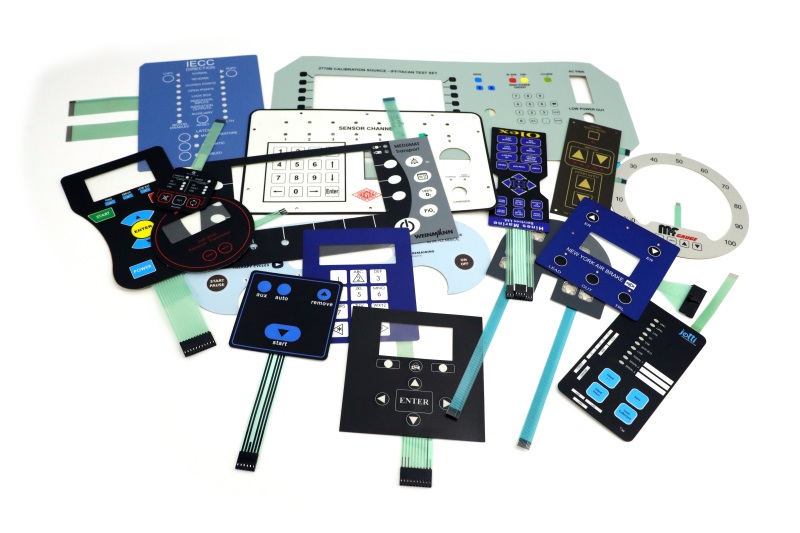
Characteristics
As we all know, switches play a role in transmitting command information in electronic products. There are many types of switches, and their development has been continuously updated with the progress of electronic products. In the 1950s, push button switches, toggle switches, and toggle switches dominated. In the 1960s, combination switches represented by piano key switches appeared to complete simple function switching. With the expansion of application areas and the increase in machine functions, rubber keypad switches appeared in the 1970s. The membrane switch is a new electronic device developed in the late 1970s and early 1980s, which is a product that meets the needs of the development of electronic products towards miniaturization, digitization, intelligence, and multi-functionality.
The membrane switch is a type of switch made by printing conductive ink on a flexible polycarbonate or polyester film, and it is a type of contact switch.
The membrane switch is a flat, multi-layer combination, sealed structure, which is an assembly of electronic machine control systems that integrates key switches, panel function markings, transparent windows for reading displays, indicator light holes, and circuits.
It has the following characteristics:
(1) Durability
The lifespan of a membrane switch can generally reach over one million times. The reason for such a long lifespan is that the switch’s action is achieved only by the vertical movement of the elastic film. Although the elastic film undergoes millions of creep movements, the creep amplitude is very small, only 0.1-0.3mm (the switch stroke), and the material selection is reasonable, far from reaching the yield limit of the film. Therefore, the membrane material can withstand a lifespan of over one million times without deformation. From another perspective, the switch contacts are vertically touched, resulting in minimal wear. The screen-printed contacts can form sufficient thickness, and an additional layer of conductive carbon is added to the silver paste contacts to achieve high wear resistance and self-lubrication. Therefore, the lifespan of membrane switches is tens of times higher than that of mechanical contact switches.
(2) Good sealing performance
Since the membrane switch is a fully sealed structure, the switch contacts are not corroded by harmful gases and are not easily oxidized. It has the characteristics of waterproof and dustproof, making it more suitable for use in various harsh environments.
(3) Small size, light weight, and reliable structure
The membrane switch can be designed as a membrane keyboard with high density, and it is a sealed sheet structure composed of multiple layers of film. All the connecting wires between switches and the outgoing wires are completed by screen printing at once. The total thickness is 1-3mm, which reduces the volume, reduces the weight, and improves reliability.
(4) Rich colors and beautiful appearance
Membrane switches can reflect personalized design concepts in the design of color patterns, and they embody the comprehensive characteristics of material beauty, decorative beauty, and craftsmanship beauty in decorative effects.
(5) Reduce the matching cost of electromechanical products
Traditional mechanical switches require welding during installation and may even require a fixed bracket. The installation of membrane switches is adhesive, as long as the backing paper is peeled off, it can be firmly pasted on the surface of the machine. The lead outlet is inserted into the socket of the machine’s rear circuit, and the circuit can be connected instantly. This saves labor, materials, and reduces the matching cost of the whole machine.
2.Applications
The membrane switch is a non-self-locking switch. It is suitable for working conditions where the switch power is less than 1W, the maximum operating voltage is 42V (DC) or 25V (DC), and the maximum operating current is less than 100mA. It can be widely used in various fields such as microcomputers, CNC, intelligent instruments, and electronic circuits with discrimination and memory functions.
